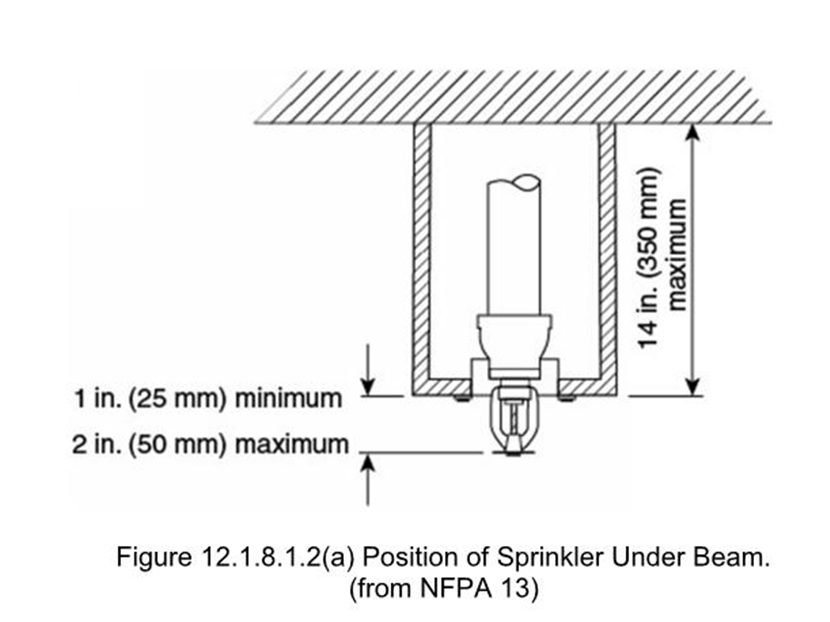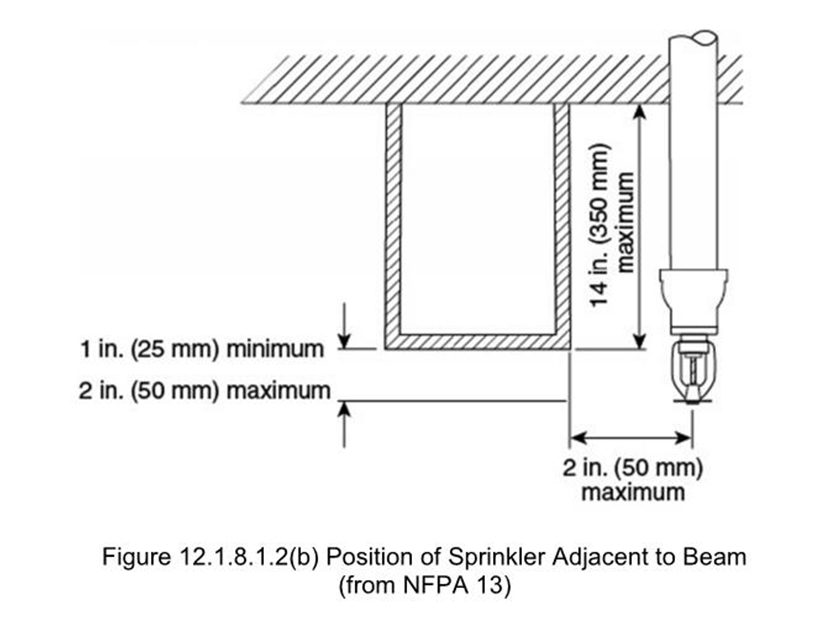Revised 2019 NFPA 13, Part 2
A look at technical changes of interest to designers of fire sprinkler systems.






The big story with the next edition of NFPA 13 is the major reformat, which we discussed in last month’s column. It was clearly a monumental undertaking and it looks as if the National Fire Protection Association did it well. Along with the reformatting, NFPA put a great deal of effort into standardizing metric conversions.
Regarding the technical changes, as far as I can tell, there are few changes of significance. I would classify most technical revisions in the category of tinkering with the standard.
One could conclude that NFPA 13 has reached a level of maturity and completeness that may warrant increasing the current three-year revision cycle to four or five years. Since it appears most new developments in sprinkler technology are occurring in the storage arena, one can use “Chapter 24 Alternative Sprinkler System Designs for Chapters 20 through 25” or the TIA process to get new technology into the market between cycles.
Of the many revisions to NFPA 13, here are the ones I found of interest:
Chapter 4. General Requirements. 4.5.2: Provides clarifications for determining sprinkler system area limitations when mezzanines are involved.
Chapter 5. Water Supplies. 5.2.2.2.1: Regarding water supply, the technical committee approved the information, but the revision was successfully challenged by a Notice of Intent to Make a Motion (NITMAM) and will not make the 2019 edition. Though it is desirable to improve the accuracy of water supply data used in the design of fire sprinkler systems, I believe the revision would have greatly increased the effort needed to develop this more accurate water supply information.
Chapter 8. System Requirements. 8.3.1.2.1: Actuator Supervision. Effective Jan. 1, 2021, removal of an electric actuator from the preaction or deluge valve that it controls shall result in an audible and visual indication of system impairment at the system-releasing control panel.
Chapter 9. Sprinkler Location Requirements. 9.2.7.1.4: Clarifies that the permission to allow sprinklers to be omitted above cloud ceilings only applies if the spaces above cloud ceilings contain either noncombustible or limited-combustible construction with minimal combustible loading.
9.2.17.1: Clarifies that permissions to omit sprinklers from beneath skylights do not apply to skylights that allow venting (other than smoke and heat venting).
9.3.6.1: Identifies a requirement to install sidewall sprinklers at the bottom of elevator hoistways.
9.3.6.2: Eliminates the sprinkler at the bottom of hoistways for enclosed, noncombustible elevator shafts that do not contain combustible hydraulic fluids.
9.3.6.3(2): Revised to eliminate the smoke detector requirement in hoistways to be consistent with NFPA 72.
9.3.16: Another NITMAM victim. The revision would have provided an exemption for sprinklers in entrance vestibules of noncombustible construction that do not contain combustibles and are 150 square feet or less in area. It will not appear in the 2019 edition.
9.5.4.1.3.1: If sprinkler deflector distance is to be measured to insulation at the roof, the insulation must be either batt insulation or insulation that withstands 3 pounds per square foot uplift force. I am not sure how sprinkler designers will be able to find out what uplift forces the insulation can resist.
9.5.5.3.1.2: Where sprinklers are required below the obstructions, installation of the sprinkler can be adjacent to and within 3 inches of the side of the obstruction rather than directly beneath the obstruction. See Figure A.9.5.5.3.1.2.
Chapter 10. Installation Requirements for Standard Response Upright, Pendent and Sidewall Sprinklers. 10.3.6.1.2 for standard spray sprinklers and 11.3.6.1.2 for extended coverage spray sprinklers. Adds exceptions where certain obstructions may be located closer than 4 feet to sidewall sprinklers
Chapter 11. Installation Requirements for Extended Coverage Standard Response Upright, Pendent and Sidewall Sprinklers. 11.3.7: A requirement for extended coverage sidewall sprinklers to be located with at least 18 inches clearance from the top of storage has been added to mirror the requirement of regular sidewall sprinklers. This clearance does not apply to shelf storage along the wall.
Chapter 12. Installation Requirements for Residential Sprinklers. 12.1.1: Conditions where residential sprinklers may be used have been added based on ceiling type and slope. These requirements came from NFPA 13R and NFPA 13D.
12.1.1.2: Adds exceptions where certain obstructions may be located closer than 4 feet to sidewall sprinklers.
12.1.8.1.1 and 12.1.8.1.2: Identifies installation conditions of residential sprinklers beneath beams with a maximum depth of 14 inches. Also allows positioning of the sprinkler within 2 inches adjacent to the beam. See Figures 12.1.8.1.2(a) and 12.1.8.1.2(b).
Chapter 14. Installation Requirements for Early Suppression Fast-Response Sprinklers. 14.2.4: Revised deleting the term “noncombustible” (construction) to be consistent with FM Data Sheet 2-0, which permits the use of ESFR under combustible construction.
Chapter 16. Installation of Piping, Valves and Appurtenances. 16.3.9.6.2: Nonmetallic pipe such as CPVC may now be used in private garages not exceeding 1,000 square feet within dwelling units. This is an exception to the current 400-square-foot limitation for other ordinary hazard locations.
16.9.4: A new section allowing the use of automated valves.
16.14.5.1.1: Revised to require the means for forward flow-testing of backflow prevention devices to be available without system modifications; i.e., reversing the FDC check valve to flow through the FDC will no longer be acceptable.
Chapter 17. Installation Requirements for Hanging and Support of System Piping. 17.4.4.9: Previous editions did not specify the unsupported length of main piping permitted.
17.4.4.9: Indicates no more than one-half the maximum allowable spacing, similar to the requirement for branch lines.
Chapter 18. Installation Requirements for Seismic Protection. 18.5.5.11: Contains conditions for the use of U-hooks or wraparound U-hooks for lateral bracing of mains and branch lines.
Table 18.5.12.2(a) through Table 18.5.12.2(m): Fastener tables were revised. New tables were added to address concrete inserts. One of the more significant technical revisions involved a huge effort by some members of the technical committee. Design of seismic bracing will become even more complicated.
18.5.12.7.5: New paragraph requiring prequalification of headed cast-in specialty concrete inserts.
Chapter 19. General Design Approaches. 19.4.3.3: This new paragraph indicates that for deluge water curtains protecting proscenium openings, all open sprinklers must be calculated.
19.4.4: Specifies the number of operating sprinklers to be included in the hydraulic design area.
Chapter 20. General Requirements for the Protection of Storage. Section 20-2 contains the following road map for establishing storage sprinkler design requirements: identify the storage commodity class (20.3 and 20.4); identify the method of storage (20.5); establish storage height and associated clearances (20.6); define the general protection criteria common to storage protection options (20.7); select the appropriate sprinkler technology (chapters 21-25); system design and installation in accordance with the remainder of document (NFPA 13).
20.5.8.4.1.1: Revises the storage rack conditions where no longitudinal flue space is required to be provided.
Tables 20.6.4.2, 20.6.4.3 and 20.6.4.4 deal with excessive ceiling clearance and CMDA sprinklers.
Chapter 22. CMSA Requirements for Storage Applications. 22.1.5.1: Addresses minimum pressure requirements based on K factor for CMSA sprinklers under open wood joist construction.
Tables 22.2, 22.3, 22.5 and 22.5 were revised to include K=25.2 sprinklers.
Chapter 23. ESFR Requirements for Storage Applications. 23.7.4.1: For exposed expanded Group A plastics, the maximum sprinkler deflector distance below the ceiling shall be 14 inches.
Chapter 25. Protection of Rack Storage Using In-Rack Sprinklers. Separating the in-rack sprinkler designs from those not using in-rack sprinklers is the one reformatting decision that concerns me. It may make it more difficult to compare the options.
Chapter 28. Systems Acceptance. 28.2.4.1: Clarifies that pressure-reducing valves shall be tested under full-flow conditions, not only under the no-flow condition.
Next month we’ll examine the changes contained in the upcoming 2019 editions of NFPA 13R and NFPA 13D. A reminder that none of this information is official until it is published, so proceed with caution.





